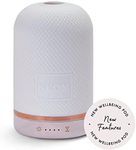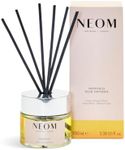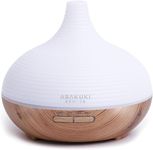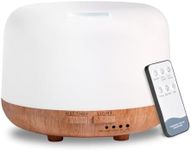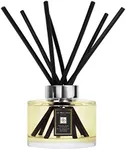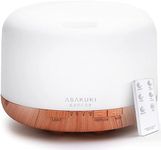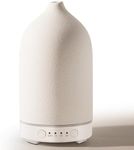Buying Guide for the Best Diffusers
When choosing a diffuser, it's important to consider how you plan to use it, the size of the space you want to fill with fragrance, and any additional features that might enhance your experience. Diffusers come in various types and sizes, each offering different benefits. Understanding the key specifications will help you select a diffuser that best fits your needs and preferences.Type of DiffuserDiffusers come in several types, including ultrasonic, nebulizing, evaporative, and heat diffusers. The type of diffuser determines how the essential oils are dispersed into the air. Ultrasonic diffusers use water and ultrasonic waves to create a fine mist, making them ideal for adding humidity to the air. Nebulizing diffusers do not use water and provide a more concentrated aroma, suitable for therapeutic use. Evaporative diffusers use a fan to blow air through a pad or filter, which is good for quick scent distribution. Heat diffusers use heat to evaporate the oil, which can alter the oil's properties. Choose a type based on whether you prioritize humidity, concentration, speed, or simplicity.
Coverage AreaThe coverage area of a diffuser indicates the size of the space it can effectively scent. This is usually measured in square feet or meters. Small diffusers are suitable for personal spaces like a bedroom or office, typically covering up to 200 square feet. Medium diffusers can handle larger rooms, covering between 200 to 500 square feet. Large diffusers are designed for open spaces or multiple rooms, covering over 500 square feet. Consider the size of the area you want to scent and choose a diffuser with a coverage area that matches or exceeds it.
Run TimeRun time refers to how long a diffuser can operate before needing a refill or recharge. This is important for determining how often you'll need to attend to the diffuser. Short run times, under 4 hours, are suitable for occasional use or small spaces. Medium run times, between 4 to 8 hours, are ideal for daily use in medium-sized rooms. Long run times, over 8 hours, are best for continuous use in large spaces or overnight operation. Consider your lifestyle and how often you want the diffuser to run when choosing the right run time.
Water CapacityWater capacity indicates how much water a diffuser can hold, which affects how long it can run before needing a refill. Smaller capacities, under 100 ml, are suitable for short-term use or small spaces. Medium capacities, between 100 to 300 ml, are good for regular use in medium-sized rooms. Larger capacities, over 300 ml, are ideal for extended use in large spaces. If you prefer less frequent refilling, opt for a diffuser with a larger water capacity.
Noise LevelNoise level is an important consideration if you plan to use the diffuser in a quiet environment like a bedroom or office. Diffusers can produce varying levels of noise, from whisper-quiet to noticeable hums. Quiet diffusers, producing less than 30 decibels, are ideal for use in bedrooms or during meditation. Moderate noise levels, between 30 to 50 decibels, are acceptable for living rooms or offices. Louder diffusers, over 50 decibels, might be suitable for larger, noisier environments. Consider where you will use the diffuser and choose one with an appropriate noise level.
Additional FeaturesMany diffusers come with additional features that can enhance your experience, such as LED lights, timers, and remote controls. LED lights can provide a calming ambiance or serve as a nightlight. Timers allow you to set the diffuser to run for a specific duration, which is useful for conserving oils and energy. Remote controls offer convenience, especially for diffusers placed in hard-to-reach areas. Consider which features are important to you and how they might improve your diffuser experience.
